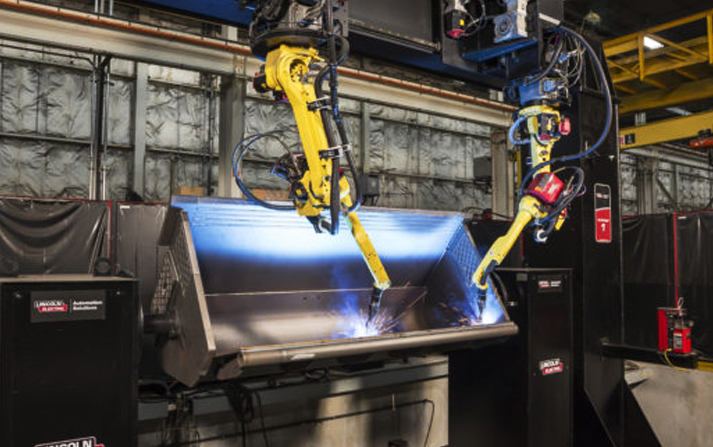+86 15633683072
As a heavy-duty engineering machinery, the excavator is used in a relatively harsh environment and has extremely high quality requirements. In the manufacturing process, welding technology directly affects the service life and safety of the equipment. The introduction of robotic laser welding provides an efficient, accurate and reliable solution for excavator welding.
The main components of the excavator include the frame, boom, bucket, slewing platform, etc. The welding of these components needs to meet the following special requirements:
1. High-strength welding: The excavator needs to work under harsh working conditions, and its welding parts must be able to withstand high-intensity gravity and impact.
2. Wear resistance: Excavator parts are in contact with hard materials such as soil, sand, gravel, and concrete for a long time, and the welded joints must have excellent wear resistance.
3. Welding consistency: The welding quality of the parts must be consistent to avoid equipment failure or damage caused by welding defects.
4. High-efficiency production: The production cycle of the excavator is tight, and efficient robotic laser welding is required to meet market demand.
1. High Precision and High Consistency
The heat affected zone of laser welding is small, and the strength and wear resistance of the welded joint are guaranteed. In excavator welding, laser welding can ensure the uniformity and strength of each weld and avoid quality defects caused by uneven welding.
2. High Efficiency and Automation
A laser welding robot can work continuously for 24 hours, and through programming and controlling seam tracking welding, the welding robot can automatically complete complex welding paths. In the welding of the excavator frame, the welding robot can complete the welding of multiple welds at one time, greatly shortening the production cycle.
3. Flexibility and Adaptability
Modern welding robots are equipped with a variety of sensors and intelligent control systems, which can quickly adapt to different welding tasks. Whether it is high-strength welding of thick plates or precision welding of thin plates, welding robots can flexibly adjust welding parameters to meet different production needs and ensure the best welding effect.
4. Reduce production costs
Robotic laser welding technology improves production efficiency and welding quality, reduces rework and scrap rates, saves labor costs, and reduces overall production costs.
Caterpillar has invested in several welding robots in its excavator production line for welding key components such as frames, booms and buckets. By adopting robot laser welding technology, the welding defect rate has been reduced by 50%, the welding quality has been improved by 40%, and the production cycle has been shortened by 30%. The welds are uniform and defect-free, effectively extending the service life of the excavator.
In short, robot laser welding provides a reliable welding solution for excavator manufacturing. By introducing this advanced technology, manufacturing companies have not only improved product quality and production efficiency, but also gained significant advantages in the fierce market competition. In the future, with the further development of intelligent control systems, welding robots will be able to handle more complex and demanding welding tasks.
Zhengzhou Kehui Technology Co., Ltd
Email: info@zzkehui.com